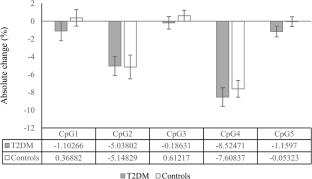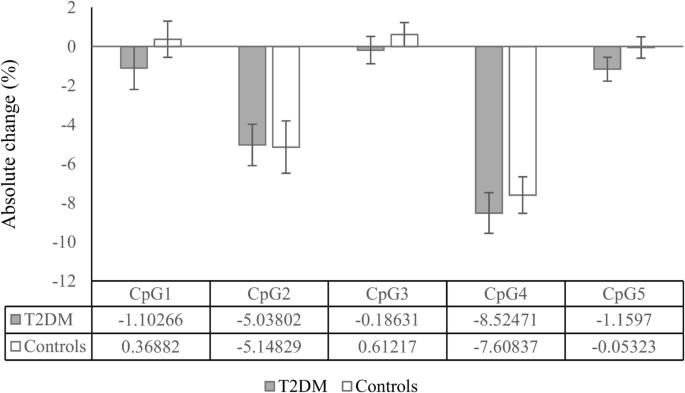TXNIP 基因甲基化的逐次转换与 2 型糖尿病风险:一项巢式病例对照研究。
IF 2.6
3区 生物学
Q2 GENETICS & HEREDITY
引用次数: 0
摘要
我们的研究旨在探讨 TXNIP 基因甲基化水平的转变与 2 型糖尿病(T2DM)发病风险之间的关系。本研究纳入了 263 例 T2DM 发病病例和 263 例匹配的非 T2DM 参与者。根据 TXNIP 基因上五个位点(CpG1-5;chr1:145441102-145442001)的甲基化水平,参与者被分为四个过渡组:保持低甲基化水平组、从低到高甲基化水平组、从高到低甲基化水平组和保持高甲基化水平组。与 TXNIP 基因 CpG2-5 甲基化水平保持低水平的个体相比,甲基化水平保持高水平的个体 T2DM 风险降低了 61-87%(CpG2 降低 66% [OR: 0.34,95% CI:0.14,0.80];CpG3:77% [OR:0.23,95% CI:0.07,0.78];CpG4:87% [OR:0.13,95% CI:0.03,0.56];CpG5:61% [OR:0.39,95% CI:0.16,0.92])。在目前的研究中,TXNIP 基因四个位点的高甲基化水平与 T2DM 发病风险的降低有关。我们的研究表明,保持 TXNIP 基因的高甲基化水平可能是一种潜在的预防 T2DM 发病的措施。本文章由计算机程序翻译,如有差异,请以英文原文为准。


Visit to visit transition in TXNIP gene methylation and the risk of type 2 diabetes mellitus: a nested case-control study
Our study aimed to investigate the association between the transition of the TXNIP gene methylation level and the risk of incident type 2 diabetes mellitus (T2DM). This study included 263 incident cases of T2DM and 263 matched non-T2DM participants. According to the methylation levels of five loci (CpG1–5; chr1:145441102-145442001) on the TXNIP gene, the participants were classified into four transition groups: maintained low, low to high, high to low, and maintained high methylation levels. Compared with individuals whose methylation level of CpG2–5 at the TXNIP gene was maintained low, individuals with maintained high methylation levels showed a 61–87% reduction in T2DM risk (66% for CpG2 [OR: 0.34, 95% CI: 0.14, 0.80]; 77% for CpG3 [OR: 0.23, 95% CI: 0.07, 0.78]; 87% for CpG4 [OR: 0.13, 95% CI: 0.03, 0.56]; and 61% for CpG5 [OR: 0.39, 95% CI: 0.16, 0.92]). Maintained high methylation levels of four loci of the TXNIP gene are associated with a reduction of T2DM incident risk in the current study. Our study suggests that preserving hypermethylation levels of the TXNIP gene may hold promise as a potential preventive measure against the onset of T2DM.
求助全文
通过发布文献求助,成功后即可免费获取论文全文。
去求助
来源期刊

Journal of Human Genetics
生物-遗传学
CiteScore
7.20
自引率
0.00%
发文量
101
审稿时长
4-8 weeks
期刊介绍:
The Journal of Human Genetics is an international journal publishing articles on human genetics, including medical genetics and human genome analysis. It covers all aspects of human genetics, including molecular genetics, clinical genetics, behavioral genetics, immunogenetics, pharmacogenomics, population genetics, functional genomics, epigenetics, genetic counseling and gene therapy.
Articles on the following areas are especially welcome: genetic factors of monogenic and complex disorders, genome-wide association studies, genetic epidemiology, cancer genetics, personal genomics, genotype-phenotype relationships and genome diversity.
 求助内容:
求助内容: 应助结果提醒方式:
应助结果提醒方式:


